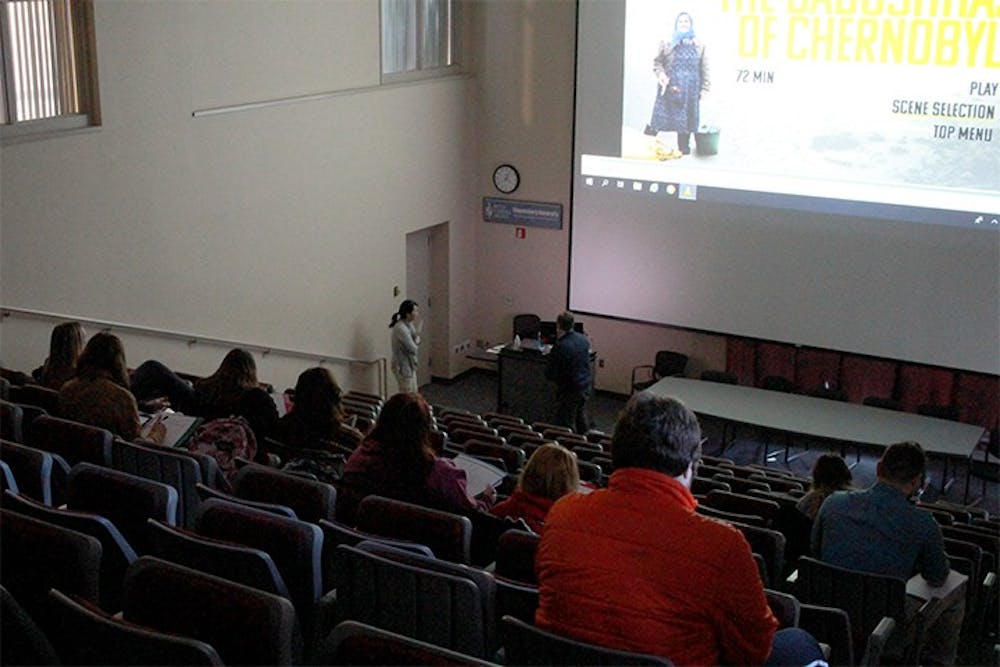The department of international studies hosted “The Babushkas of Chernobyl” in the John L. Grove Forum as yet another installment in its film series last Thursday.
The film told the story of human resilience, and focused on the aftermath of the 1986 environmental disaster that forever changed Chernobyl. The nuclear power plant exploded and released radioactive material into the air, which spread to the surrounding landscape.
The film was presented by Shippensburg University’s Bob Stephens, professor of international business and Ying Yang, professor of sociology.
“It shows the resilience of the human spirit,” Stephens said.
When the power plant exploded, the Soviet government evacuated its residents within the Chernobyl Exclusion Zone. The people of Chernobyl did not want to leave their homes, and chose to illegally return in spite of the radiation. These stubborn women are called babushkas, or “grandmothers” in Russia.
The babushkas mostly live off farms they maintain. They raise animals and grow crops, not knowing of the danger the radioactive sponges may possibly present to them after the explosion.
“Radiation doesn’t scare me,” one woman said. “Starvation does.”
These elderly women go about life as normal, and often meet with one another to sing and dance, eat and drink and reminisce about old times. They have lived in the Chernobyl area all their lives, and have suffered through war, famine and other tragedies. They are not about to let radiation evict them.
“I’m still so happy I’m in my own house. I don’t depend on anybody,” a babushka said. “You don’t get sick in your motherland.”
Interjecting the plot of the women living in Russia were clips of young men known as “stalkers.” Inspired by an eponymous video game called “S.T.A.L.K.E.R.: Shadow of Chernobyl” that takes place in the Chernobyl exclusion zone, they illegally enter the exclusion zone for the fun of it.
The film juxtaposed the babushkas and the stalkers by showing that neither group understands the threat of radiation sickness, or does not care.
The stalkers trekked throughout the region to the derelict city of Pripyat — a once-populated city — now sitting directly in the exclusion zone. Along the way, they filled bottles with unfiltered water from streams and drank it. To them, Chernobyl was not a danger — it was a novelty.
Part of the problem with underestimating the danger of Chernobyl is that it is difficult to prove that the radiation is affecting people. So far, scientists have only been able to prove an increase in thyroid cancer among individuals exposed to the disaster.
What is worse is that the babushkas do not seek medical help — they prefer to deal with their problems with home remedies made from herbs, and are reluctant to go to hospitals for Western medicine.
Stephens described the babushkas as the ultimate climate deniers. Radiation is an invisible threat, and though the Soviet (and later Ukrainian) governments tried to protect their people from the dangers of Chernobyl, many are still drawn to the location.
“Each person should live where their soul desires,” one babushka said.


The Slate welcomes thoughtful discussion on all of our stories, but please keep comments civil and on-topic. Read our full guidelines here.